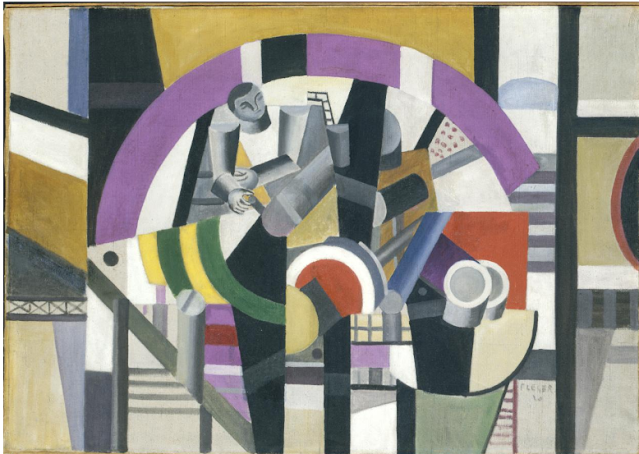Jackson Pollock, Blue Poles
Today I give you a new challenge, but an interesting one. Jackson Pollock (1912-1956) was difficult to understand in 1952, when he completed this painting and art novices still have trouble understanding. It was originally titled, Number 11 and sometimes the year completed was added to the title. Later it simply became known as Blue Poles, however many art critics believe, as I do, that this title does a disservice, because to much attention is drawn to the major lines and not to the work as a whole. It is an enamel and aluminum paint with glass on canvas, measuring 83.5" x 192.5" or almost 7 feet tall by over 16 feet long, so huge! It is part of the permanent collection of the National Gallery of Australia, in Canberra. They purchased it in 1973 for 1.3 million, today its value ranges from 100 - 300 million.
As most people know, Pollock was the first "action" painter. He laid the canvas on the floor and carefully poured, spattered, dripped. In the process he became so absorbed, he felt one with the work - that his inner being, his whole personality was expressing itself. This painting is an expression of his feelings, rather than an illustration of them, and over thirty years of hard work went into it's creation.
Viewing a work this size is difficult to see as a whole. But looking at the resized reproduction, the structure becomes obvious. Pollock has carefully balanced all of the paint applications, as if there is no end, no beginning. There is no specific center of interest, and no horizon, but a very definite linear rhythm pattern moving across the format in a complex, interesting way. If we were able to see the original, we would be able to step into the experience and get lost in the colors, lines and shapes. Maybe we could "feel" a little of Pollock, a sign of a great Abstract Expressionist.
Make Art a part of your day, it's a beautiful thing to do.
As most people know, Pollock was the first "action" painter. He laid the canvas on the floor and carefully poured, spattered, dripped. In the process he became so absorbed, he felt one with the work - that his inner being, his whole personality was expressing itself. This painting is an expression of his feelings, rather than an illustration of them, and over thirty years of hard work went into it's creation.
Viewing a work this size is difficult to see as a whole. But looking at the resized reproduction, the structure becomes obvious. Pollock has carefully balanced all of the paint applications, as if there is no end, no beginning. There is no specific center of interest, and no horizon, but a very definite linear rhythm pattern moving across the format in a complex, interesting way. If we were able to see the original, we would be able to step into the experience and get lost in the colors, lines and shapes. Maybe we could "feel" a little of Pollock, a sign of a great Abstract Expressionist.
Make Art a part of your day, it's a beautiful thing to do.




Yes, I do have trouble understanding Pollock. The complexity of his layering is mind boggling. It does take time to really study it, and I do admire his work. Definitely not boring or overly dramatic, but I do feel invited in by the colors and rhythm! What fun it was to copy his style at the old former art center!! I think young "wannabe" artists can feel validated by trying to work in his style. Who can critique a work of "feeling"?
ReplyDelete